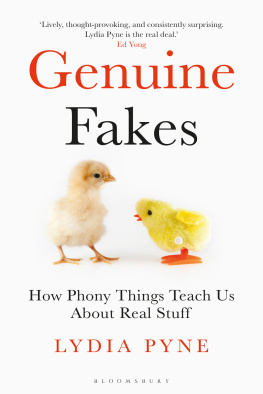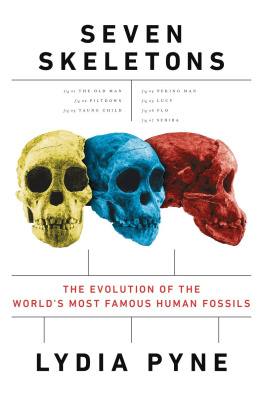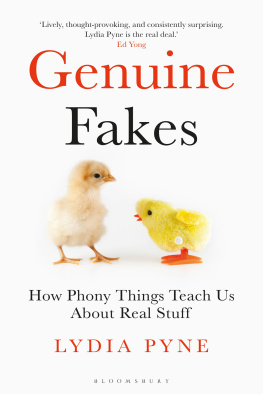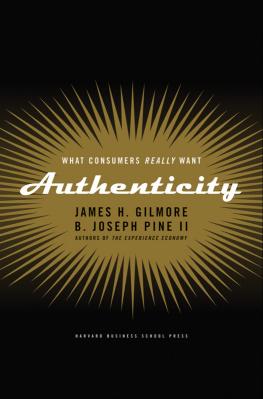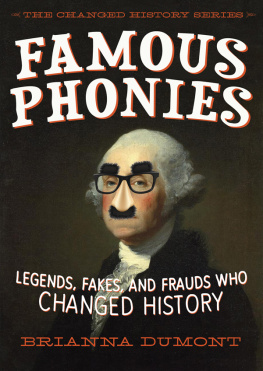
Also available in the Bloomsbury Sigma series:
Sex on Earth by Jules Howard
Spirals in Time by Helen Scales
A is for Arsenic by Kathryn Harkup
Herding Hemingways Cats by Kat Arney
Death on Earth by Jules Howard
The Tyrannosaur Chronicles by David Hone
Soccermatics by David Sumpter
Big Data by Timandra Harkness
Goldilocks and the Water Bears by Louisa Preston
Science and the City by Laurie Winkless
Bring Back the King by Helen Pilcher
Furry Logic by Matin Durrani and Liz Kalaugher
Built on Bones by Brenna Hassett
My European Family by Karin Bojs
4th Rock from the Sun by Nicky Jenner
Patient H69 by Vanessa Potter
Catching Breath by Kathryn Lougheed
The Planet Factory by Elizabeth Tasker
Wonders Beyond Numbers by Johnny Ball
Immune by Catherine Carver
I, Mammal by Liam Drew
Reinventing the Wheel by Bronwen and Francis Percival
Making the Monster by Kathryn Harkup
Best Before by Nicola Temple
Catching Stardust by Natalie Starkey
Seeds of Science by Mark Lynas
Eye of the Shoal by Helen Scales
Nodding Off by Alice Gregory
The Science of Sin by Jack Lewis
The Edge of Memory by Patrick Nunn
Turned On by Kate Devlin
Borrowed Time by Sue Armstrong
Love, Factually by Laura Mucha
The Vinyl Frontier by Jonathan Scott
Clearing the Air by Tim Smedley
Superheavy by Kit Chapman
18 Miles by Christopher Dewdney
For Stan

Contents
I couldnt have written a book like Genuine Fakes without the expertise and enthusiasm that so many colleagues, friends and professionals have offered over the course of this project. I owe a huge debt to: Stuart Baldwin, Nadia Berenstein, Paul Brinkman, Matthew Brown, Angela Burnley, Jill Darnell, Luke Dickens, Mike deRoos, Holly Dunsworth David Evans, Jay Ford, Mitch Fraas, Erik Goldstein, Benjamin Gross, Christopher Hallett, John Hopkins, Eliza Howlett, Bruce Hunt, Nicholas James, Lindsay Keiter, Katie Langenfeld, Rachel Lauden, Eleanor Louson, Marc Kissel, Christopher Manias, Alex McAdams, Scott McGill, Marissa Nicosia, Garrett Ozar, Linda Pellett, Becca Peixotto, Michael Press, Nick Pyenson, Megan Raby, Stephen Raby, Natasha Reynolds, Lukas Rieppel, Nicole Rudolph, Aitor Ruiz-Redondo, Josefrayn Sanchez-Perry, Clare Sauro, Christopher Schaberg, Ken Schwarz, Stephanie Strauss, Peter Tallack, Paul Taylor, Erin Thompson, Amara Thornton, Christopher Tunnell, Mike Urbancic, Gregory Urwin, Eric Williams, Audra Wolfe, Rebecca Wragg Sykes and Donna Yates.
Additionally, many institutions have been kind enough to help facilitate the research for Genuine Fakes through access to archives, copies of publications and materials, reprinting materials as well as interviews: Alaska Department of Fish and Game, American Museum of Natural History, Caverne du Pont dArc, Deutsches Museum, Eterneva, Explore.org, Harry Ransom Center at the University of Texas at Austin, the Howard Tracy Hall Foundation, Hyperallergic , Morgan Library & Museum, Museum of Innovation and Science, Natural History Museum (London) and Oxford Natural History Museum. I would especially like to offer my gratitude to the Interlibrary Loan librarians at the University of Texas at Austin this book simply would not have been possible without their efforts.
My editors Jim Martin and Anna MacDiarmid have made this project, oh, so much better through their most welcome editorial feedback, suggestions and directions. Krystyna Mayers copyediting has helped sharpen and clarify the manuscript. Holly Zemsta was kind enough to share her thoughts on many early drafts and to truly appreciate every bizarre factoid this project dredged up. Over the last couple of years, my parents, Steve and Sonja Pyne, and my sister, Molly Pyne, have offered their never-flagging interest in this projects stories.
And, above all, I am most grateful to Stan Seibert for his never-ending optimism that Genuine Fakes would become a real book.
No one wants to be bamboozled by a fake, but everyone loves hearing about those who are.
Frauds, forgeries and fakes all make for fantastic stories and have for millennia. In ancient Rome, for example, shrewd art collectors were wary of cheap knock-offs of valuable Greek vases and sculptures. The famous philosopher Cicero was thought to have had rather discerning taste, collecting only the most authentic of Greek art; statesmen like the general Sulla and emperor Nero, art-savvy Roman patricians sniffed with disdain, did not. The Middle Ages saw a rise in the dubious yet lucrative economy of selling genuine religious relics to gullible wayfarers on religious pilgrimages. (As for bones of St. Denis, Mark Twain quipped after touring medieval reliquaries of Europe centuries later, in the 1860s, I feel certain we have seen enough of them to duplicate him, if necessary.) Talented forgers have hoodwinked collectors for centuries, lining their pockets and revelling in having pulled the wool over the worlds eyes. Running the gambit from clever hoaxes to embarrassing swindles, the history of fakery is certainly never dull.
But fakery isnt a phenomenon that only inhabits the worlds of art and antiquities. Nothing, it would seem, is safe from a fakers clutches, and all manner of things from paintings to fossils, rare books to flavourings, gems to artefacts in museums, and even nature itself have at one time or another been faked, and faked spectacularly.
Its easy to treat real and fake as discrete, distinct categories, because finding examples of each appears to be rather straightforward. Designer handbags sold in Saks? Real. Knock-off purses hawked from a corner, where Gucci is spelled with one c? Fake. The Mona Lisa in the Louvre? Real. Da Vincis you can buy on eBay? Fake. Living history museums? Real. Renaissance Faires? Fun, but fake. A raclette wheel? A block of Wisconsin cheddar? Real. Cheez Whiz? Fake. Definitely fake.
But what happens when it becomes trickier to sort out what is real and what is not? Do the same things that make something real also make it authentic? What are we to think when a fake becomes even more famous than its original? Could a fake object meet our expectations for authenticity better and more directly than the genuine one ever could? Or could artificial objects be more desirable more ethical perhaps than natural ones? How do older standards for authenticity translate into the twenty-first century?
It turns out that the world is full of things that defy a neat, superficial categorisation its full of in-between objects that are real and not-real at the same time. Theyre what we might call genuine fakes. Sometimes we think that theyre authentic, sometimes not. Theyre provocative and fascinating and challenging. And theyre everywhere.
* * *
The American artist Andy Warhol died on 22 February 1987. But the small technicality of his death doesnt necessarily mean that there arent new Warhol paintings to be made, sold and collected.
In 2010, the artist Paul Stephenson came across 10 original Warhol acetates from the mid-twentieth century. (Acetates are the negatives used in silk screening.) Stephenson purchased them, although at the time he wasnt sure what exactly he would use them for. The acetates included several iconic Warhol motifs Jackie Kennedy , Mao and even Warhols own self-portrait and were quickly authenticated by the Andy Warhol Museum in Pittsburgh, by Alexander Heinrici, Warhols own master printer, and by art expert Rainer Crone. Warhol himself, Stephenson was told, had left the paint on the acetates.

